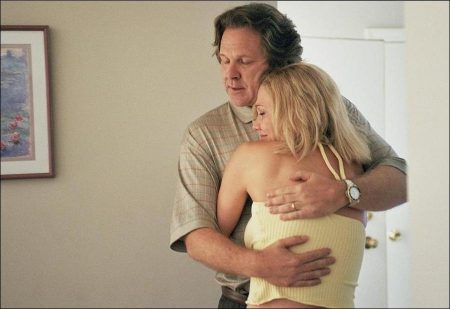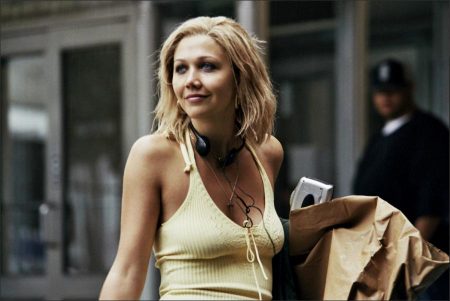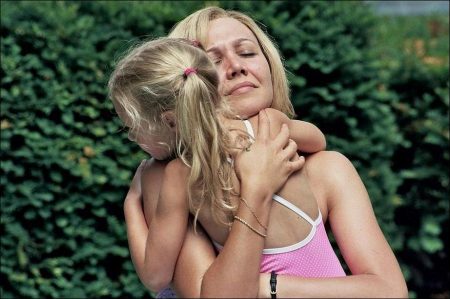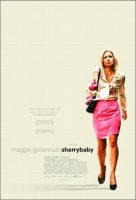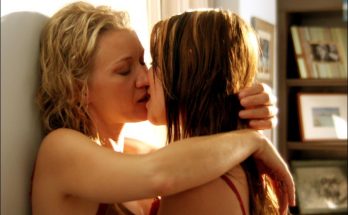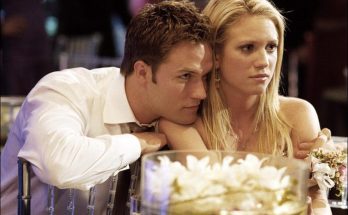Sherrybaby Movie Trailer. The process of creating sherrybaby began when Laurie Collyer and her script were selected to take part in the 2001 Sundance Filmmaker’s Lab in Sundance, Utah, where screenwriters and filmmakers meet each year to flesh out and develop promising projects.
The Lab was an invaluable opportunity for Collyer to pull together the loose strands in order to finish her script, as well as to meet people that might help her see it to the screen. “The Sundance Lab gave me everything I needed to make my script good, to get the movie made, and to keep me humble for the rest of my life,” she says.
When Collyer left the Lab with her script and began to take it around to producers, all of them told her that she would need to get an experienced actor attached to the project before she’d ever be able to get it made. By this time, Maggie Gyllenhaal had had her breakout performance in Secretary and was now becoming recognized as an extremely talented actress in the independent film community. Collyer got Gyllenhaal the script, and shortly thereafter met her for dinner in downtown New York to discuss the project.
Gyllenhaal was immediately very taken with the character of Sherry. “Sometimes there are scripts that just light something up in me. There was something about the script that was, I thought, really, really honest,” says Gyllenhaal of what drew her to the character and story. “Also, I’ve seen bad movies about people who are going through similar things to what Sherry’s going through and I thought this was an opportunity to make a really good one.”
Collyer immediately sensed that Gyllenhaal had not only the acting chops, but the character necessary to take on the weighty role. “She has a heart of gold, and with a project as personal and close to my heart as this is, I knew that was going to be very important,” says Collyer. After Gyllenhaal got on board, Lemore Syvan, who had recently worked with Gyllenhaal on John Sayles’ Casa De Los Babys, and Marc Turtletaub, with whom Syvan had worked with on Duane Hopwood, came on as producers.
The film shot for 25 days in July and August of 2004 on location in New Jersey. Because of the intensity of the material, it was a difficult shoot for Gyllenhaal, who sometimes found herself shooting as many as four very emotionally taxing scenes on the same day. For both aesthetic and budgetary reasons, the production inconspicuously shot in the neighborhoods and locations with a small crew and very little equipment, which contributed to the sense of realism and immediacy that pervades the film.
The Heart of Sherrybaby
“You know what? I used to get scared too…all the time.” — Sherry Swanson
At the heart of sherrybaby is the aching portrayal by Maggie Gyllenhaal of a young woman who confidently steps out from behind bars feeling ready to conquer her demons, only to realize that the choices and realities that come with freedom often make it very difficult to do so.
“Sherry is a woman who needs to make a choice and her choice is between being a mother and being a criminal. It’s the first time in her life when she’s confronted with the reality that she can’t be both,” says writer/director Laurie Collyer. “In prison she thought she had to confront it, but it’s a very isolated environment and she could get away with being a mother without having to deal with day-to-day survival.”
Unfortunately, Sherry’s instincts as both a mother and a self-sufficient human being are often misguided, and it isn’t until she is able to come to grips with the fact that she may need help that there is some hope for her success as both. “Sherry comes out of prison with the highest hopes that she’s going to be the best mother ever,” says Maggie Gyllenhaal. “She’s going to get an apartment, she’s going to get a great job, and she’s going to raise her daughter like no one has ever raised a child before. And then two weeks later she’s basically back in prison.”
Gyllenhaal gives an affectingly complex embodiment to Sherry, who has been, in some senses, toughened from her time spent on the streets and in prison, and yet is stunted intellectually and psychically from her three years away from the everyday realities and decisions that would arm her with the maturity to learn how to get by. “Sherry comes out of prison full of hope in a way that for a 23-year-old is naïve, but she was in prison for the early years of her 20s and a drug addict before that, so I think she is kind of like a kid,” says Gyllenhaal.
“She gets out of prison feeling like she’s going to take the world and make it hers, and when things go wrong for her, which they do almost immediately, she falls from a high, high place. I think that’s a much more interesting movie and a more interesting woman than someone who starts out really angry at the world.” One of the real victories of Gyllenhaal’s performance is her adept way at getting beyond the tough exterior of a woman hardened by years of harsh living to the vulnerable adolescent that Sherry in many respects truly is.
Shooting for Truth
“I forgot how it gets, you know. Here I was thinking prison is the worst, that this is gonna be some kind of heaven, but it ain’t…” — Sherry Swanson
One of the priorities of bringing sherrybaby to the screen for writer/director Laurie Collyer was to maintain a certain truthfulness to both the character of Sherry—who was based on one of her close childhood friends—and to the real-life experiences of ex-convicts, many of them mothers, with whom she had spent time and interviewed.
The strong relationship between the characters and situations in sherrybaby and their counterparts in real-life made it important to Collyer to ground the film in as much realism as possible, so as to give the viewers a sense of the experience that an ex-convict goes through as they re-familiarize themselves with the outside world. The authenticity with which the script dealt with these issues, as well its ability to make such specific situations universally understandable, were what drew Maggie Gyllenhaal to the project: “The script just hit exactly in my mind on how people behave, on what people want, and what people do when they want something and it’s impossible for them to have it, which are things that everybody knows.”
For these reasons, and also because of Collyer’s background in documentary film (her first film, Nuyorican Dreams, was a documentary on an impoverished New York Puerto Rican family that premiered at the 2000 Sundance Film Festival), sherrybaby relies heavily on the documentary tradition. Shot on location in New Jersey, where the film takes place, Director of Photography Russell Fine used long takes and wide angles that make the environment as much a part of the story as the characters themselves. He also often used a wandering handheld camera that lends an air of voyeurism to the film, giving it a raw sense of authenticity reminiscent of cinema verité.
The character of Sherry was based on Sue, one of Collyer’s closest childhood friends, to whom she has dedicated the film. “I sort of became obsessed with her after I graduated from college and found out she had just gone to prison. I wondered what had happened – why she had gone one way and I the other,” says Collyer. Her personal relationship with Sue made it very important to Collyer that the character of Sherry Swanson, who eventually took on a story and a life of her own, remained loyal to her spirit.
Collyer was also inspired by the stories that she heard while working with children in foster care, many of whom had mothers in prison. “I thought that was an interesting question – what happens to the children when their parents get released?” She spent a significant amount of time interviewing both children and ex-convicts themselves to get both the technical details of the prison and parole system and the emotional toll of the released prisoners’ re-introduction to society. Much of the dialogue in sherrybaby was pulled directly out of conversations Collyer had with ex-convicts or speeches given in Alcoholics Anonymous meetings, and many of the obstacles that Sherry faced came from similar stories Collyer had been told while conducting interviews. She met a woman who told her “that you have to blow the job counselor to get a good job,” as well as a Native American ex-con and addict-turned-healer, both of whom inspired characters who found their way into sherrybaby.
Before production, Collyer insisted on Gyllenhaal doing a very particular kind of research. She sent her to several halfway house programs, drug recovery programs, and parole meetings, where she met women like Sherry, who had recently been released from prison and were making their way back out into society. Gyllenhaal spent about a month living in this world before even starting to shoot. “When I met all these people I kind of thought, ‘Whoa, I don’t think there is an accurate movie about what it’s like to get out of prison.’ I got this really visceral connection and felt this kind of responsibility for the movie in more of a political way.”
Sherrybaby (2006)
Directed by: Laurie Collyer
Starring: Maggie Gyllenhaal, Ryan Simpkins, Brad William Henke, Bridget Barkan, Sam Bottoms, Kate Burton, Giancarlo Esposito, Stephen Peabody, Caroline Clay
Screenplay by: Laurie Collyer
Production Design by: Stephen Beatrice
Cinematography by: Russell Lee Fine
Film Editing by: Curtiss Clayton, Joe Landauer
Costume Design by: Jill Newell
Set Decoration by: Lisa Scoppa
Music by: Jack Livesey
MPAA Rating: R for strong sexuality, nudity, language and drug content.
Distributed by: IFC Films
Release Date: September 8, 2006
Views: 135
